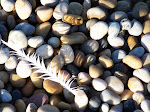I had an interesting experience teaching this week, when introducing a group to the delights and techniques of working with sinamay. Many friends and fellow milliners know that its not my material of choice but I fully accept its versatility and possibilities, it doesn't have to look like everyone else' race hat in the 90's with a large self coloured bow!
 |
| image courtesy of madeinchina.com |
|
I had begun gently anticipating the response from certain members of the group as the material does come with its own set of preconceptions. So soft or unstiffened sinamay, my sinamay of choice thanks to the wonderful teaching of
Waltraud Reiner in 2005 at Zandra Rhodes museum London, which in the many years I have been teaching hasn't had a bad response. Always a first time for everything as they say.
 |
| student work 2008 |
My enthusiasms didn't quite engage all the group, which can leave one perplexed, but then a challenge is always good, it makes one rethink how you teach and one's own interpretation of the material. Sinamay has its failings and yet if it is seen purely as a material in the way of esparterie or Paris net or to experiment with shape and form then its flexibility and weightlessness make it an exciting proposition. So we shall see how next week's lesson goes. Interesting to find out others' perceptions of sinamay are. Is it a marmite material?
 |
| Philip Treacy Gondola Sinamay hat |








Well, coming from the US...I don't know what Marmite is! :-) However, I happen to LOVE sinamay--stiffened, unstiffened, embroidered, window-paned, etc., etc. It is THE most versatile of millinery materials as it can be blocked and free-formed into oblivion. I do think it scares some people, particularly those who are more comfortable with 'traditional' millinery materials.
ReplyDelete